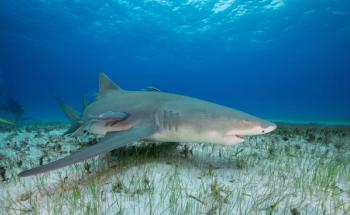
Coughing dog with a murmur - Now what? (Proceedings)
The patient is coughing with no other signs, but now there is a murmur. What to do? I take radiographs and hope that they guide me for the next test.
The patient is coughing with no other signs, but now there is a murmur. What to do? I take radiographs and hope that they guide me for the next test. Treatment for lung or heart disease, or advanced imaging, including echocardiography, video fluoroscopy or CT? Cases discussed in this session will provide examples in the spectrum of intra-thoracic disease which can be significantly guided by routine radiographs.
Coughing
Coughing is caused by a wide spectrum of upper spectrum of upper and lower airway causes. The temptation when a dog has a concurrent heart murmur is to assume a cause and effect relationship and treat for heart failure. After a year in private practice, I concluded that there was only an infrequent relationship between the two clinical signs. My other observation was that thoracic radiographs were not taken on each case, perhaps for other clinical or owner financial reasons. In addition, veterinarians were interpreting the images with a biased eye toward heart failure. Perhaps even worse, many dogs with primary tracheal and pulmonary apparently responded to furosemide therapy, even more firmly reinforcing the clinical diagnosis or primary heart disease. Two specific cause and effect relationships are seen with heart enlargement and a cough; 1) left-sided cardiac failure and cardiogenic pulmonary edema, and 2) moderate to severe left atrial enlargement and static left main stem bronchial compression/collapse. Both of these conditions are based on left-sided cardiomegaly. Right-sided heart enlargement or failure do not cause a cough. Alternatively, chronic lower airway disease (with clinical signs of a cough) or primary pulmonary fibrosis may cause right heart failure. Some misused criteria of right-sided cardiomegaly include "reverse D" shape, which is normal (gentle almond?) and sternal contact, which again is a normal finding.
Cardiomegaly
The assessment of heart enlargement is both subjective and objective. True to form most radiologists depend on the their experience for a subjective interpretation. More objective criteria include intercostal spaces and %width of the chest. These depend on a normal full inspiratory effort, which is often inhibited by underlying pulmonary, pleural or chest wall diseases, pain and obesity. The vertebral heart scale is a useful objective system of assessing dog and cat hearts. For cats I measure the maximum width on the VD, which should not exceed 4 vertebra. For dogs the combined length and width on the lateral view should not exceed 11 vertebrae. These criteria are most useful for overall cardiomegaly. For specific chamber or side of enlargement the heart face analogy is very useful.
It is important to be able identify the left caudal mainstem bronchus on all projections. Elevation and compression of the left caudal mainstem bronchus are important features of left atrial enlargement. The left atrium may be either elevated or ventrally displaced by middle tracheobronchial adenopathy, but is always dorsally displaced by left atrial enlargement. Not seeing left atrial enlargement significantly decreases the likelihood that lung disease is pulmonary edema.
In dogs, unlike cats, the pulmonary veins often become enlarged with moderate to severe pulmonary congestion. This is evidenced by disparity between veins and arteries or when the veins exceed the width of the proximal 4th rib measured at the level where they cross this rib on the lateral projection or the 9th rib on the VD/DV view.
Lung patterns
The most important premise to the conclusion that the enlarged heart is causing the lung opacity associated with cardiogenic pulmonary edema, is the interpretation of an alveolar lung pattern in the perihilar region. Often more opaque on the right than left side, this is often easily seen on the DV or VD projection. This pattern begins, often subclinically, as an interstitial pattern. The capillaries that weep with excessive hydrostatic pressure associated with pulmonary venous congestion live in the interstitial space. With increased time or severity the fluid weeps out of the interstitial space and into the adjacent alveoli. The fluid-filled alveoli and terminal bronchi elicit a cough response.
How do we interpret an alveolar pattern? The most encompassing sign is border effacement. Lobar sign, air bronchograms and loss of distinctness of borders of the adjacent heart, pulmonary vessels, and diaphragm are all examples of this effect. The regional distribution of perihilar edema seems highly specific for heart failure.
Alveolar disease in other regions is much less commonly associated with heart failure in dogs, although quite common in cats. Ventral, middle and cranial distributions are seen with bronchopneumonia. Patchy widspread alveolar disease can be due to bleeding nodules or inflammed granulomatous diseases. Blood can accumulate either dependently (like bronchopneumonia) or locally in the case of contusions. Noncardiogenic causes of edema, including cerebral edema, may be caused by head trauma, seizuring or neck injury and have a specific very dorsal and caudal distribution. Other causes, including vasculitis, DIC, ARDS and toxicities are more widespread and variable.
Conclusions
Left-sided cardiomegaly causes cough by two mechanisms; 1) static compression of the left mainstem bronchus caused by left atrial dilation and/or 2) pulmonary edema associated with a perihilar alveolar pattern caused by excessive pulmonary congestion. These are both associated with left-sided heart enlargement. Noting this enlargement and the concurrent effects are important aspects of associating a heart murmur with a patient's cough. If the association seems weak, the pattern of heart enlargement or lung opacity does not fit these causes, then strongly consider a second, unrelated disease and treat appropriately.
References
O'Brien, RT. Thoracic radiology for the small animal practitioner. Teton New Media. 20
Newsletter
From exam room tips to practice management insights, get trusted veterinary news delivered straight to your inbox—subscribe to dvm360.





